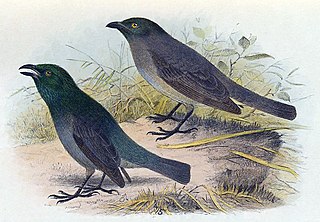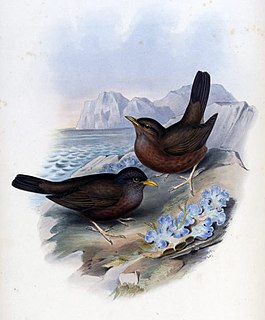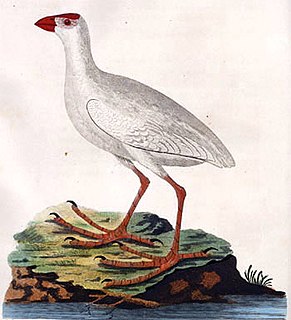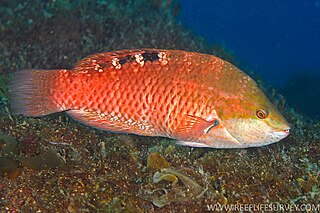 W
WMorwong is a genus of fishes belonging to the family Latridae found in oceans off Australia and New Zealand. They were formerly included in the genus Cheilodactylus in family Cheilodactylidae, but based on genetic and morpological analyses they have been moved to genus Morwong in family Latridae.
 W
WThis is a list of butterflies of Lord Howe Island.
 W
WThe Lord Howe Island butterflyfish is a butterflyfish of the family Chaetodontidae, found along the east coast of Australia, around Lord Howe Island, and down the east coast of Northland in New Zealand, at depths of between 10 and 150 m. They are up to 20 cm long with black and yellow/white vertical stripes.
 W
WDryococelus australis, commonly known as the Lord Howe Island stick insect or tree lobster, is a species of stick insect that lives on the Lord Howe Island Group. It was thought to be extinct by 1920, only to be rediscovered in 2001. It is extirpated in its largest former habitat, Lord Howe Island, and has been called "the rarest insect in the world", as the rediscovered population consisted of 24 individuals living on the small islet of Ball's Pyramid.
 W
WThe Lord Howe boobook, also known as the Lord Howe morepork, was a bird in the true owl family endemic to Lord Howe Island in the Tasman Sea, part of New South Wales, Australia. It is an extinct and little-known subspecies of the morepork.
 W
WThe Lord Howe fantail, also known as the Lord Howe Island fantail or fawn-breasted fantail, was a small bird in the fantail family, Rhipiduridae. It is an extinct subspecies of the New Zealand fantail. It was endemic to Lord Howe Island in the Tasman Sea, part of New South Wales, Australia.
 W
WThe Lord Howe flax snail or the Lord Howe placostylus, scientific name Placostylus bivaricosus, is a species of large air-breathing land snail, a terrestrial pulmonate gastropod mollusc in the family Bothriembryontidae.
 W
WLord Howe long-eared bat, Nyctophilus howensis, is a vespertilionid bat known only by a single specimen, a skull found on Lord Howe Island in 1972. A mammalian insectivorous species resembling the long-eared Nyctophilus, with an elongated head that is comparatively larger, about which almost nothing is known. The bat may have been casually observed in flight during the twentieth century, but is likely to have become extinct since the island's discovery and occupation. The demise of N. howensis is possibly the result of shipwrecked rats and the owls introduced to control them.
 W
WThe Lord Howe parakeet, also known as the Lord Howe red-fronted parakeet, is an extinct parrot endemic to Lord Howe Island in the Tasman Sea, part of New South Wales, Australia. It was described as full species by Tommaso Salvadori in 1891, but subsequently it has been regarded as subspecies of the red-crowned parakeet. In 2012, the IOC World Bird List recognised it as species.
 W
WThe Lord Howe pigeon, Columba vitiensis godmanae, was a subspecies of the metallic pigeon which existed on Lord Howe Island. It became extinct in the 1850s.
 W
WThe Lord Howe starling was a small bird in the starling family. It is an extinct subspecies of the Tasman starling, the only other subspecies being the Norfolk starling which is also extinct. It was endemic to Lord Howe Island in the Tasman Sea, part of New South Wales, Australia.
 W
WThe Lord Howe thrush, also known as vinous-tinted thrush or vinous-tinted blackbird, is an extinct subspecies of the island thrush. It was endemic to Lord Howe Island, an Australian island in the Tasman Sea, where it was also called the doctor bird or ouzel by the islanders.
 W
WThe Kermadec petrel is a species of gadfly petrel in the family Procellariidae. It is 38 cm long with a wingspan of 100 cm. It is polymorphic, with light, dark and intermediate morphs known. It eats squid, fish and other marine creatures.
 W
WThe white-bellied storm petrel is a species of seabird in the family Oceanitidae. It is found in Angola, Argentina, Australia, Brazil, Chile, Ecuador, French Polynesia, French Southern Territories, Maldives, Namibia, New Zealand, Perú, Saint Helena, and South Africa. Its natural habitat is open seas.
 W
WThe robust white-eye, also known as the Lord Howe white-eye or robust silvereye, and locally as the "big grinnell", was a species of bird in the family Zosteropidae. It was endemic to the lowland forests of Lord Howe Island, east of Australia.
 W
WThe white swamphen, also known as the Lord Howe swamphen, Lord Howe gallinule, or white gallinule, is an extinct species of rail which lived on Lord Howe Island, east of Australia. It was first encountered when the crews of British ships visited the island between 1788 and 1790, and all contemporary accounts and illustrations were produced during this time. Today, two specimens exist: the holotype in the Natural History Museum of Vienna, and another in Liverpool's World Museum. Although historical confusion has existed about the provenance of the specimens and the classification and anatomy of the bird, it is now thought to have been a distinct species endemic to Lord Howe Island and most similar to the Australasian swamphen.
 W
WThe orange wrasse is a species of wrasse native to the Pacific Ocean from Australia to New Zealand and the Kermadec Islands. It is found in inshore waters at depths of from 10 to 50 metres. It can reach a length of 17 centimetres (6.7 in) SL. It can also be found in the aquarium trade.